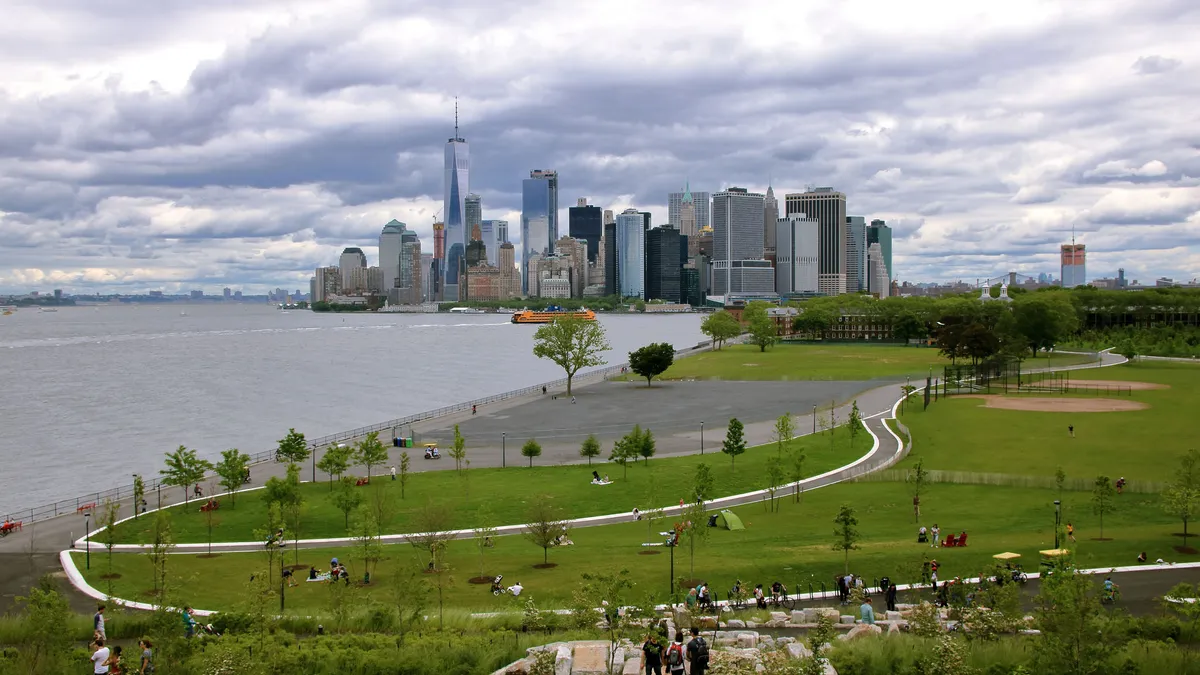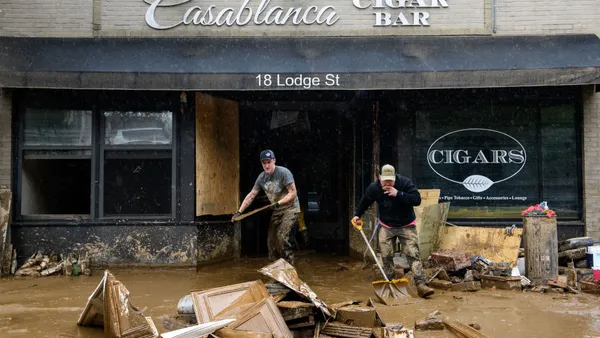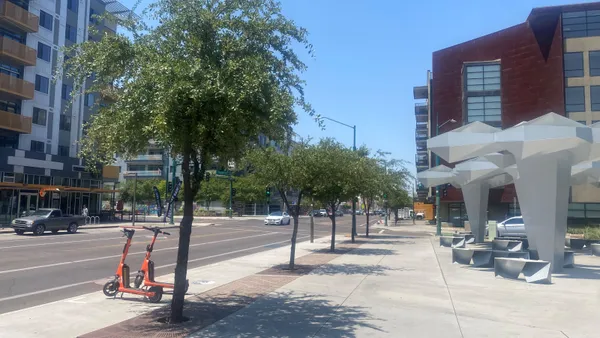UPDATED, Sept. 21, 2020: The Trust for Governors Island last week unveiled its plans for the development of a climate change solutions center on the island that could create 8,000 new jobs and $1 billion in economic impact for the city.
According to the trust, the proposal could include: an academic or research anchor institution to study the impacts of climate change, fit with dormitories to create an "immersive community"; commercial development for climate research; gathering space to host events and conversations regarding climate change; and a living laboratory, among other features.
The Trust has not yet secured any anchor universities or research partners, according to The Architect's Newspaper.
The Trust will work with local NYC officials to develop a rezoning proposal for the "mixed-use climate innovation district," and plans to submit that proposal to the city's public land-use review process in October, according to a news release. The Trust says all buildings across the development sites "will strictly adhere to flood-resistant construction methods."
Dive Brief:
- New York City is exploring turning part of the 172-acre Governors Island into a "living laboratory" to study the effects of climate change, according to a report in The New York Times.
- The Times reports that the city has circulated a request for proposals to contractors that lists climate adaptation as an "anchor" theme for the development. The plan, which is still in its early stages, could zone an area as large as 4.2 million square feet on the southern half of the island for climate change research.
- New York City has been seeking to rezone Governors Island for various commercial or educational purposes since it regained control over the island from the federal government in 2003.
Dive Insight:
Sitting in New York Harbor less than a mile from the city, Governors Island is especially at risk from storm surges and the effects of sea level rise. That will make it a compelling site for researchers to study how to best prepare coastal infrastructure for rising seas, a particular risk from climate change according to the U.S. government’s National Climate Assessment.
Hurricane Sandy in 2012 caused a water surge of nearly 14 feet in Battery Park and flooded large parts of Lower Manhattan in what was seen as a preview of New York's future under climate change. In March, Mayor Bill de Blasio announced a $500 million resiliency plan for lower Manhattan, which included increased flood protection, extended shorelines and coastal reinforcements.
Other coastal cities have also directly addressed their vulnerable shorelines. Last year, Boston Mayor Marty Walsh laid out a plan to add 67 acres of green space to the city's shoreline and protect infrastructure from rising seas. Honolulu Mayor Kirk Caldwell issued a directive in 2018 instructing city agencies to protect infrastructure and take steps to mitigate sea level rise.
The living laboratory on Governors Island would allow New York to partner with universities, construction firms and researchers to test new innovations and strategies to adapt to climate change. Alicia Glen, head of the board of the Trust for Governors Island, told the Times that the project would also pay for maintenance on Governors Island, saying "the reason why there are development opportunities on the island is to generate money that will allow it to be sustainable."










